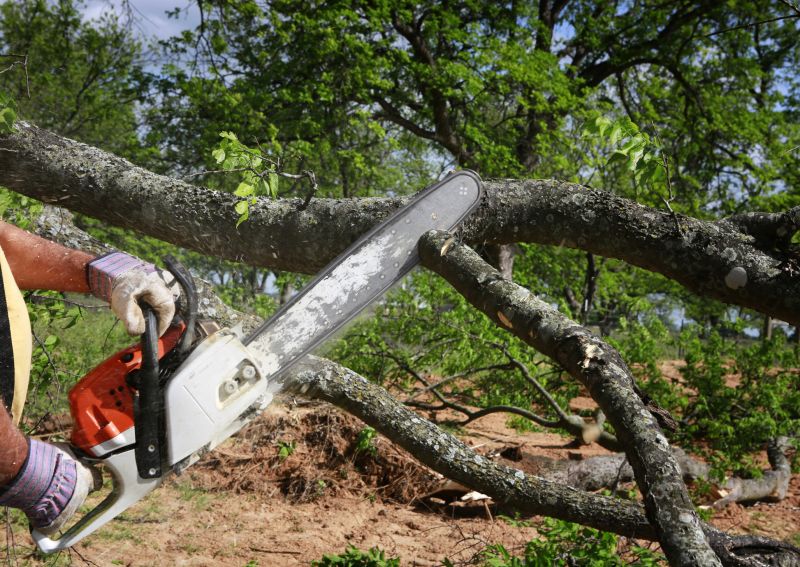Ultimate Guide to Tree Branch Removal Equipment for Homeowners
Learn about the key features and considerations when selecting tools to tackle branch removal projects with confidence.
 Removing tree branches safely and efficiently requires the right tools and equipment. Whether managing overgrown branches, pruning for health, or clearing away debris, selecting appropriate products can make the task easier and safer. Hand tools like pruning shears and loppers are suitable for small branches, providing precision and control. For larger or higher branches, powered tools such as pole saws and chainsaws are often necessary, offering increased reach and cutting power. It is important to consider the size and height of the branches, as well as the user’s experience and physical ability when choosing the right equipment.
Removing tree branches safely and efficiently requires the right tools and equipment. Whether managing overgrown branches, pruning for health, or clearing away debris, selecting appropriate products can make the task easier and safer. Hand tools like pruning shears and loppers are suitable for small branches, providing precision and control. For larger or higher branches, powered tools such as pole saws and chainsaws are often necessary, offering increased reach and cutting power. It is important to consider the size and height of the branches, as well as the user’s experience and physical ability when choosing the right equipment.
Top Overall Option
Telescoping Pole Saw
A versatile telescoping pole saw offers extended reach without the need for ladders, making it suitable for trimming high branches safely from the ground. Its adjustable length allows for precise control, and many models feature lightweight designs with ergonomic grips to reduce fatigue. This type of tool is often powered by rechargeable batteries or gas engines, providing ample cutting power for various branch sizes.
Types of Products For Tree Branch Removals
Hand Pruning Shears
Ideal for small branches and detailed pruning, hand shears provide precise cuts with minimal effort.
Loppers
Suitable for medium-sized branches, loppers offer increased leverage and cutting capacity compared to hand shears.
Pole Pruners
These extend your reach for high branches and are available in manual and powered versions.
Chainsaws
Powerful tools designed for cutting through large branches and trunks, available in corded, cordless, and gas-powered options.
Reciprocating Saws
Versatile for various cutting tasks, especially useful for awkward or hard-to-reach branches.
Hand Saws
Traditional manual saws suitable for small to medium branches, offering control and precision.
Aerial Lifts
Mechanical lifts or cherry pickers provide safe access to high branches for professional-grade removal.
Rope and Pulley Systems
Used to control and lower large branches safely, especially in delicate environments.
Debris Nets and Tarps
Assist in catching falling branches and debris to protect property and people below.
Safety Gear
Includes helmets, gloves, eye protection, and harnesses to ensure safety during removal tasks.
Popular Choices
Offers mobility and ease of use for trimming high branches without extension cords.
Provides high power for large branches and trunk cutting, suitable for professional or extensive work.
Compact and easy to handle for small pruning jobs and detailed trimming.
A lightweight manual tool with extendable reach for safely trimming higher branches.
Combines portability with power, ideal for quick and efficient branch trimming.
Designed for thicker branches, offering increased leverage and cutting strength.
Suitable for smaller jobs and easy to maneuver in tight spaces.
A simple, reliable tool for small to medium branches, requiring no power source.
For professional arborists, includes harnesses and climbing ropes for high branch removal.
Specialized for tearing or removing large, stubborn branches safely.
Safety should always be a priority when working with tree branches. Using protective gear such as gloves, eye protection, and helmets can prevent injuries. Additionally, understanding the proper operation of each tool and adhering to safety guidelines reduces risks associated with falling branches or tool mishandling. For those working at heights, the use of stable ladders or cherry pickers is recommended, along with tools designed for safe elevated use.
Maintenance and storage are also key considerations. Regularly inspecting tools for damage, cleaning after use, and storing them in a dry place prolong their lifespan and ensure they are ready for future tasks. When selecting products, it is beneficial to consider features like adjustable lengths, ergonomic handles, and ease of operation to improve comfort and efficiency. Properly chosen equipment can help maintain healthy trees, improve landscape aesthetics, and prevent potential damage caused by falling branches.
Key Buying Considerations
- Branch size and thickness determine the suitable cutting tool, from hand shears to chainsaws.
- Height and reach requirements influence whether manual, pole, or powered tools are appropriate.
- Power source options include corded electric, cordless battery, or gas, each with its own advantages.
- Weight and ergonomics are important for reducing fatigue during extended use.
- Safety features such as blade guards, safety switches, and anti-vibration handles enhance user protection.
- Ease of maintenance and availability of replacement parts can impact long-term usability.
- Durability and build quality ensure the tool withstands regular use and tough conditions.
- Noise levels may be a consideration for residential areas or noise-sensitive environments.
- Storage options and portability can influence convenience and ease of transport.
- Compatibility with existing tools or accessories might be beneficial for integrated workflows.
- User experience and skill level should guide the choice of manual versus powered tools.
- Budget constraints can help narrow down options without compromising essential features.
- Environmental conditions, such as moisture or extreme temperatures, may affect tool choice and maintenance.
- Availability of safety gear and accessories should be considered as part of the overall investment.
- Local regulations or guidelines related to tree work may influence the selection of professional vs. DIY tools.
